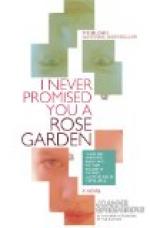Of course, where hardy plants are massed, as in nurseries, horticultural gardens, or the large estates, each in a bed or plot of its kind, this resetting is far simpler, as each variety can receive the culture best suited to it, and there is no mixing of species.
Another common error in regard to the hardy garden, aided and abetted by Garden Goozle, is that it is easy or even practicable to have every bed in a blooming and decorative condition during the whole season. It is perfectly possible always to have colour and fragrance in some part of the garden during the entire season, after the manner of the natural sequence of bloom that passes over the land, each bed in bloom some of the time, but not every bed all of the time. Artifice and not nature alone can produce this, and artifice is too costly a thing for the woman who is her own gardener, even if otherwise desirable. For it should appeal to every one having a grain of garden sense that, if the plants of May and June are to grow and bloom abundantly, those that come to perfection in July and August, if planted in their immediate vicinity, must be overshadowed and dwarfed. The best that can be done is to leave little gaps or lines between the hardy plants, so that gladioli, or some of the quick-growing and really worthy annuals, can be introduced to lend colour to what becomes too severely of the past.
There is one hardy garden, not far from Boston, one of those where the landscape architect lingers to study the possibilities of the formal side of his art in skilful adjustment of pillar, urn, pergola, and basin,—this garden is never out of flower. At many seasons Evan and I had visited it, early and late, only to find it one unbroken sheet of bloom. How was it possible, we queried? Comes a day when the complex secret of the apparent simple abundance was revealed. It was as the foxgloves, that flanked a long alley, were decidedly waning when, quite early one morning, we chanced to behold a small regiment of men remove the plants, root and branch, and swiftly substitute for them immense pot-grown plants of the tall flower snapdragon (Antirrhinum), perfectly symmetrical in shape, with buds well open and showing colour. These would continue in bloom quite through August and into September. So rapidly was the change made that, in a couple of hours at most, all traces were obliterated, and the casual passer-by would have been unaware that the plants had not grown on the spot. This sort of thing is a permissible luxury to those who can afford and desire an exhibition garden, but it is not watching the garden growing and quivering and responding to all its vicissitudes and escapes as does the humble owner. Hardy gardening of this kind is both more difficult and costly, even if more satisfactory, than filling a bed with a rotation of florists’ flowers, after the custom as seen in the parks and about club-houses: to wit, first tulips, then pansies and daisies, next foliage plants or geraniums, and finally, when frost threatens, potted plants of hardy chrysanthemums are brought into play.




